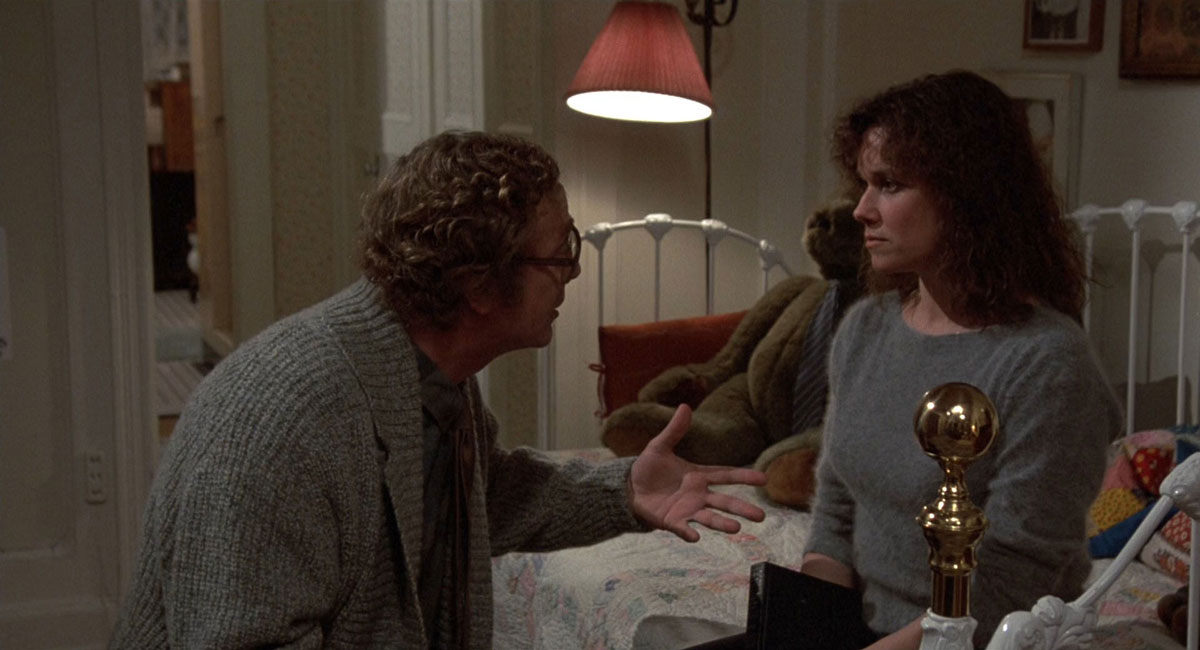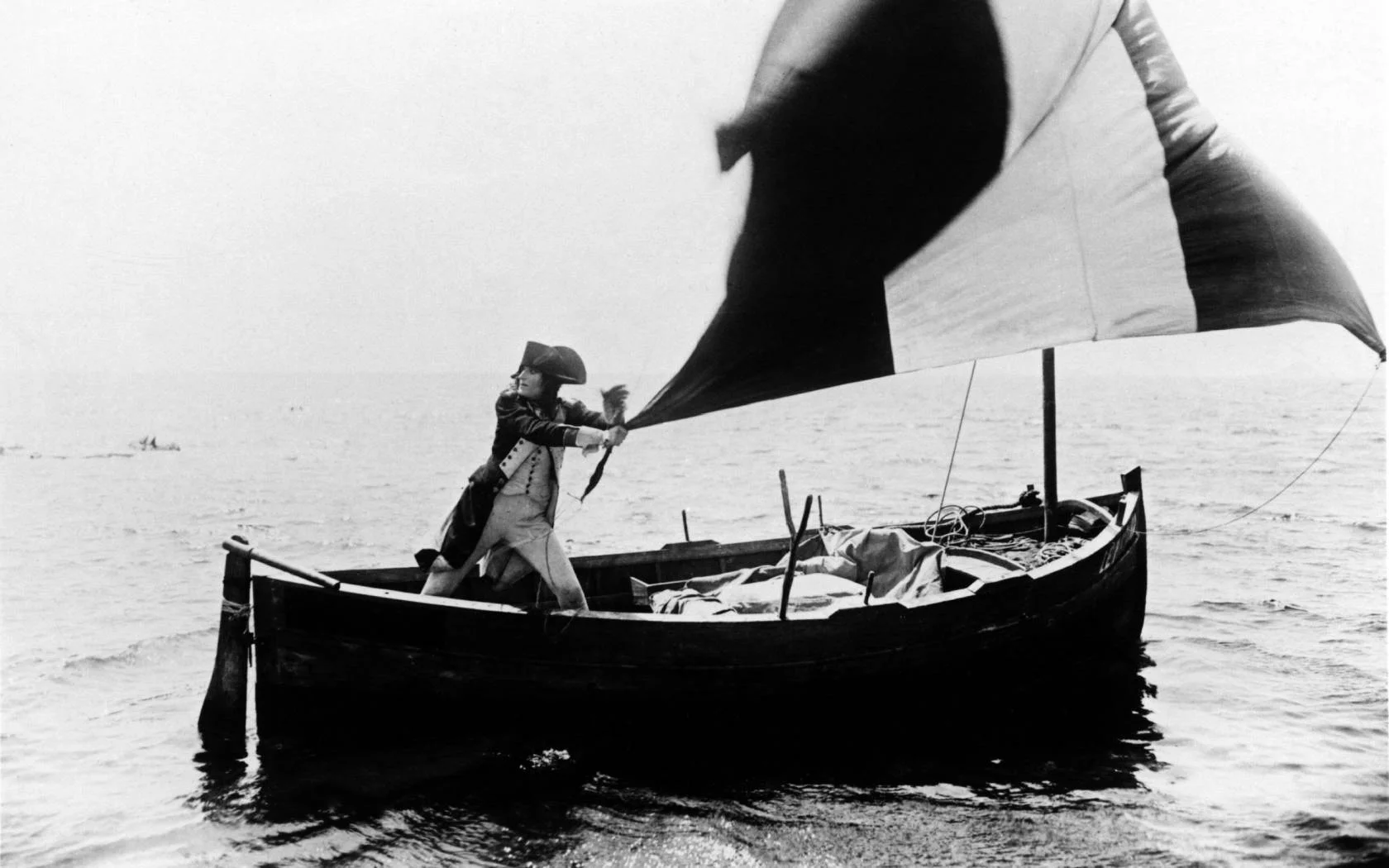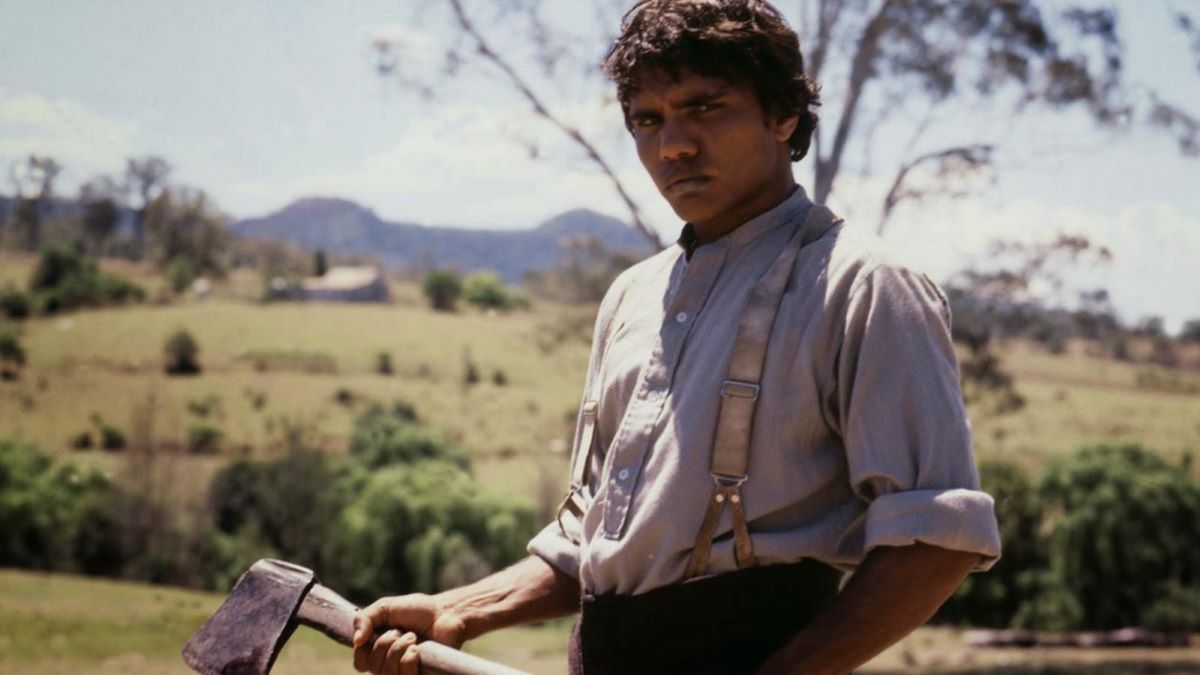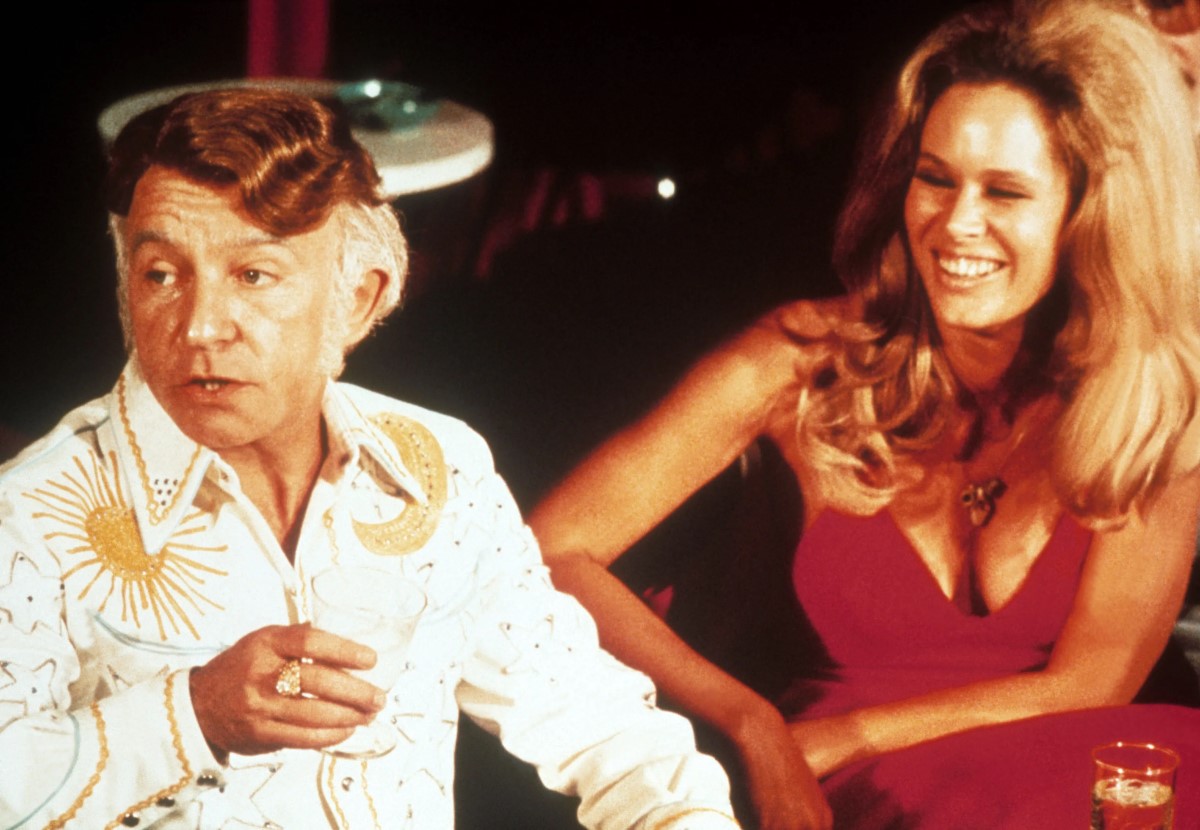by Pauline Kael
Woody Allen’s Hannah and Her Sisters is an agreeably skillful movie, a new canto in his ongoing poem to love and New York City which includes Annie Hall and Manhattan. The principal characters are members of a show-business family, with the stable, dependable Hannah (Mia Farrow), a successful actress who manages a career and children with equal serenity, as the pivotal figure. At the start, the whole clan gathers at her sprawling Upper West Side apartment for Thanksgiving dinner. It includes her two flailing-about sisters: the wildly insecure cocaine-nut Holly (Dianne Wiest), whose acting career has never taken off, and the unsure-of-herself Lee (Barbara Hershey), who goes to A. A. and turns to men she can look up to. It includes the three sisters’ bickering show-business-veteran parents: their boozy, habitually flirtatious mother (Maureen O’Sullivan) and their affable, but underconfident father (Lloyd Nolan). And it includes Hannah’s financial-consultant husband (Michael Caine), who is swooning with passion for Lee, and an assortment of friends and relatives. Not in attendance is Lee’s artist lover (Max von Sydow), who has no patience for social chatter. The movie ends at another Thanksgiving celebration, two years later; by then, Holly has pulled herself together, Hannah’s husband has had his fling with Lee, and Hannah’s ex-husband, Mickey Sachs (Woody Allen), a TV writer-producer, has rejoined the clan. And things are rosier. Like Ingmar Bergman’s Fanny and Alexander, which was also about a theatrical family, the film is full of cultured people, and it has a comfortable, positive tone. Bergman’s central character, Alexander, was clearly based on Bergman as a child; Allen’s heroine is clearly based on Mia Farrow. And, like Bergman, whose cast included old friends, an ex-wife, an ex-lover, and a few of his children, Allen uses several actors he has worked with before, has Mia Farrow’s mother playing Hannah’s mother, and uses Farrow’s actual apartment and seven of her eight children.
Hannah is meant to be the still center of the film, but mute would be more like it. Casting Mia Farrow as an ideal creative, nurturing woman in demure, plain-Jane dresses, Allen turns her into an earth-mother symbol and disembodies her. Most of the time, Hannah the Madonna seems barely animate. Allen has got her so subdued and idealized that she seems to be floating passively in another world. Barbara Hershey has a luscious presence here. She has a sexual vibrancy about her, and she fits her role—it’s easy to believe that her brother-in-law would become obsessed with her. But Allen hasn’t written enough sides for her—or for anyone else—to play. Dianne Wiest does all she can with her role—she makes a style out of neurosis. Her Holly is so fouled up that she’s always angry at herself and everybody else, too. Her nerves aquiver, she seems to be holding back either screams or tears; she lives in a tizzy. (And she’s so completely lacking in confidence that she’s bound to match up with the Woody Allen character.) But Allen’s script, for all its shrewdness about sisterly relations and its considerable finesse, doesn’t cut very deep. There’s a basic, bland unadventurousness about the picture: it never makes us wonder about anything. Hangups are there to be got through; the characters are like patients in the hands of a benevolent, godlike therapist.
Hannah and Her Sisters would be lifeless without Woody Allen’s presence as Mickey Sachs, who is convinced he has a fatal disease. It needs his mopey personality, and it needs his jokes, even though they’re throwbacks to earlier gags. It’s a funny thing about Woody Allen: the characters he plays learn to accept life and get on with it, but then he starts a new picture and his character is back at square one. Mickey is a hypochondriac, terrified of dying and obsessed with the same old Woody Allen question: If there’s no God and no afterlife, what’s the point of living? Mickey takes a year off from his work in TV to ponder the meaninglessness of everything. He tries to find faith in Catholicism and then, for a moment, in Hare Krishna (because of the sect’s belief in reincarnation); he attempts suicide. Then he sees the Marx Brothers in Duck Soup, and when they sing “Hail, Fredonia” he realizes that he wants to enjoy life for as long as he can. He’ll settle for romantic love, for a “relationship.” But we’ve been through all this with him before.
Still, the picture needs him desperately, because the other roles are so thin that there’s nobody else to draw us into the story. Michael Caine flails around confusedly trying to bring something to a role that’s out of bedroom farce but that he seems expected to give other dimensions to. At first, you attribute Caine’s discomfort to the character’s crush on Lee, but afterward he goes on being ill at ease. Maureen O’Sullivan (who was born in 1911) comes through with a ribald-old-trouper performance that’s gutsier than anything she ever did in her M-G-M years. But it’s a small role. So is that of Lloyd Nolan (born in 1902), who made his final appearance here; he brings to his part the dapper weariness of a vain man whose wife goads him unconscionably—he may suspect that tormenting him is what keeps her on her toes and beautiful. In a larger role, Max von Sydow has nothing to play but an aspect of the earlier Woody Allen characters: he’s a rigid intellectual, a man so devoted to high culture that he’s exasperated by other people’s delight in pop. He’s like the Woody Allen of Stardust Memories, and his determination to educate Lee recalls the Woody of Annie Hall.
This character’s gloom and the way he cuts himself off from other people tell us that Woody Allen is saying here that the high arts are not everything—that we also need the ease and relaxation of pop culture, that superficiality isn’t all bad. Allen’s love for the romantic, “civilized” pop music of the past is expressed throughout the movie, which features Rodgers and Hart songs, a couple of Harry James recordings, and some Count Basie, as well as Gustav Leonhardt playing Bach. Allen draws the line at high-powered rock, though: part of Holly’s coming to her senses is her graduating from the downtown life of CBGB to classical music. Woody Allen can’t seem to get rid of a streak of draggy pedantry; he’s still something of a cultural commissar. (I could have done without the quick tour of Manhattan’s architectural marvels that’s included in the movie.)
Like Bergman, Allen shows his intellectuality by dramatizing his quest for meaning and then shows his profundity by exposing the aridity of that quest. This celebration of family is essentially a celebration of sanity and of belonging to a group—of satisfying the need for human connections. It’s a tribute to human resilience, a look-we-have-come-through movie, and the people who were deeply moved by Manhattan are likely to be still more deeply moved by Hannah. The infertile Mickey even becomes fertile; the picture goes the traditional life-affirming route. Yet what he has come through to is so lacking in resonance that it feels like nowhere. Hannah is very fluid in the way it weaves the characters in and out; Allen’s modulated storytelling has a grace to it. The picture is certainly better than three-fourths of the ones that open, and it’s likable, but you wish there were more to like. It has some lovely scenes—I was particularly taken with the one in which Holly and a good friend (played by Carrie Fisher) are out in a car with a man (Sam Waterston) whom they’re both interested in, and at their last stop before calling it a night they discuss the logistics of which one he should drop off first. Yet, over all, the movie is a little stale, and it suggests the perils of inbreeding. It might be time for Woody Allen to make a film with a whole new set of friends, or, at least, to take a long break from his sentimentalization of New York City. Maybe he’d shed the element of cultural self-approval in the tone of this movie. There’s almost a trace of smugness in its narrow concern for family and friends; it’s as if the moviemaker has seen through the folly of any wider concern.
Woody Allen has joined a club that will have him, and that may help to explain the awesome advance praise for the film. Like the Robert Benton picture Kramer vs. Kramer, which also stirred up enormous enthusiasm in the press, Hannah evokes the “family/style” pages in The New York Times and all the books and editorials and “Hers” columns about people divorcing and remarrying and searching to find meaning in their lives. It’s about people that members of the press can identify with; it’s what they imagine themselves to be or would like to be. They’re applauding their fantasy of themselves.
All the vital vulgarity of Woody Allen’s early movies has been drained away here, as it was in Interiors, but this time he’s made the picture halfway human. People can laugh and feel morally uplifted at the same time. The willed sterility of his style is terrifying to think about, though; the picture is all tasteful touches. He uses style to blot out the rest of New York City. It’s a form of repression, and from the look of Hannah and Her Sisters, repression is what’s romantic to him. That’s what the press is applauding—the romance of gentrification.
The New Yorker, February 24, 1986






1 thought on “Hannah and Her Sisters | Review by Pauline Kael”
Thank you so much!!!